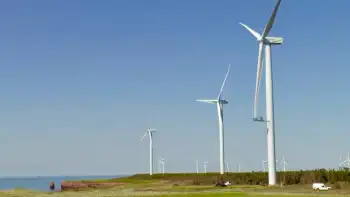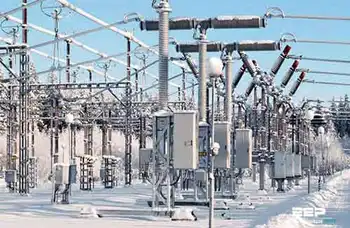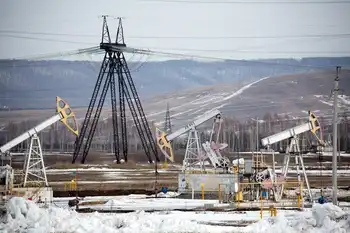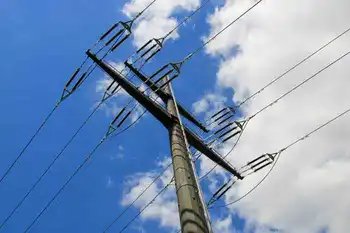Radioactivity levels fall after radiation leak
The International Atomic Energy Agency IAEA said a radiation dose level of 11.9 millisieverts mSv per hour was observed at the main gate of the Fukushima nuclear power plant at midnight GMT.
Six hours later, the rate had declined to 0.6 millisieverts, the Vienna-based agency said in a statement. The IAEA uses the unit to measure doses of radiation received by people.
Meanwhile, France's ASN nuclear safety authority said the accident at the plant could now be classed as level six out of an international scale of one to seven.
The ASN had rated the ongoing accident at the plant as a five or six.
Level seven was used only once, for Chernobyl in Ukraine in 1986. The 1979 accident at the Three Mile Island nuclear power plant in the United States was rated a level five.
Earlier, dangerous levels of radiation leaking from a crippled nuclear plant forced Japan to order 140,000 people to seal themselves indoors after an explosion and a fire dramatically escalated the crisis spawned by a deadly tsunami.
In a nationally televised statement, Prime Minister Naoto Kan said radiation has spread from the four stricken reactors of the Fukushima Dai-ichi nuclear plant along Japan's northeastern coast. The region was shattered by the 9.0-magnitude earthquake and the ensuing tsunami that is believed to have killed more than 10,000 people, plunged millions into misery and pummeled the world's third-largest economy.
Japanese officials told the International Atomic Energy Agency that the reactor fire was in a storage pond and that “radioactivity is being released directly into the atmosphere.” Long after the fire was extinguished, a Japanese official said the pool, where used nuclear fuel is kept cool, might be boiling.
“We cannot deny the possibility of water boiling” in the pool, said Hidehiko Nishiyama, an official with the economy ministry, which oversees nuclear safety.
That reactor, Unit 4, had been shut down before the quake for maintenance.
If the water boils, it could evaporate, exposing the rods. The fuel rods are encased in safety containers meant to prevent them from resuming nuclear reactions, nuclear officials said, downplaying the risk of that happening.
But they acknowledged that there could have been damage to the containers. They also confirmed that the walls of the storage pool building were damaged.
Though Kan and other officials urged calm, developments fuelled a growing panic in Japan and around the world amid widespread uncertainty over what would happen next. In the worst case scenario, one or more of the reactor cores would completely melt down, a disaster that could spew large amounts of radioactivity into the atmosphere.
“I worry a lot about fallout,” said Yuta Tadano, a 20-year-old pump technician at the Fukushima plant, who said he was in the complex when quake hit.
“If we could see it we could escape, but we can't,” he said, cradling his 4-month-old baby, Shoma, at an evacuation centre.
The radiation fears added to the catastrophe that has been unfolding in Japan, where at least 10,000 people are believed to have been killed and millions of people have spent four nights with little food, water or heating in near-freezing temperatures as they dealt with the loss of homes and loved ones. Up to 450,000 people are in temporary shelters.
Asia's richest country hasn't seen such hardship since World War II. The stock market plunged for a second day and a spate of panic buying saw stores running out of necessities, raising government fears that hoarding may hurt the delivery of emergency food aid to those who really need it.
In a rare bit of good news, rescuers found a 70-year-old woman alive in her swept-away home four days after the tsunami flattened much of Japan's northeastern coast.
The Fukushima Dai-ichi nuclear complex, along that battered coastline, has been the focus of the worries. Workers there have been desperately trying to use seawater to cool the fuel rods in the complex's three reactors, all of which lost their cooling ability after the quake and tsunami.
On March 14, the complex was hit by its third explosion since March 11, and then a fire in a separate reactor.
Afterward, officials just south of the area reported up to 100 times the normal levels of radiation, Kyodo News Agency reported. While those figures are worrying if there is prolonged exposure, they are far from fatal.
Tokyo reported slightly elevated radiation levels, but officials said the increase was too small to threaten the 39 million people in and around the capital, about 270 kilometres away. Closer to the stricken nuclear complex, the streets in the coastal city of Soma were empty as the few residents who remained there heeded the government's warning to stay indoors.
Kan and other officials warned there is danger of more leaks and told people living within 30 kilometres of the Fukushima Dai-ichi complex to stay indoors to avoid exposure that could make people sick.
“Please do not go outside. Please stay indoors. Please close windows and make your homes airtight,” Chief Cabinet Secretary Yukio Edano told residents in the danger zone.
“These are figures that potentially affect health. There is no mistake about that,” he said.
Weather forecasts for Fukushima were for snow and wind from the northeast, blowing southwest toward Tokyo, then shifting and blowing east out to sea. That's important because it shows which direction a possible nuclear cloud might blow.
Some 70,000 people had already been evacuated from a 12-mile 20-kilometre radius from the Dai-ichi complex. About 140,000 remain in the new warning zone.
Officials said 70 workers were at the complex, struggling with its myriad problems. The workers, all of them wearing protective gear, are being rotated in and out of the danger zone quickly to reduce their radiation exposure.
Another 800 staff were evacuated. The fires and explosions at the reactors have injured 15 workers and military personnel and exposed up to 190 people to elevated radiation.
Temperatures in at least two of the complex's reactors, units 5 and 6, were also slightly elevated, Edano said.
“The power for cooling is not working well and the temperature is gradually rising, so it is necessary to control it,” he said.
Fourteen pumps have been brought in to get seawater into the other reactors. They are not yet pumping water into Unit 4 but are trying to figure out how to do that.
In Tokyo, slightly higher-than-normal radiation levels were detected but officials insisted there are no health dangers.
“The amount is extremely small, and it does not raise health concerns. It will not affect us,” Takayuki Fujiki, a Tokyo government official said.
Kyodo reported that radiation levels nine times higher than normal were briefly detected in Kanagawa prefecture near Tokyo and that the Tokyo metropolitan government said it had detected a small amount of radioactive materials in the air.
Edano said the radiation readings had fallen significantly by the evening.
Japanese government officials are being rightly cautious, said Donald Olander, professor emeritus of nuclear engineering at University of California at Berkeley. He believed even the heavily elevated levels of radiation around Dai-ichi are “not a health hazard.” But without knowing specific dose levels, he said it was hard to make judgments.
“Right now it's worse than Three Mile Island,” Olander said. But it's nowhere near the levels released during Chernobyl.
On Three Mile Island, the radiation leak was held inside the containment shell — thick concrete armour around the reactor. The Chernobyl reactor had no shell and was also operational when the disaster struck. The Japanese reactors automatically shut down when the quake hit and are encased in containment shells.
Olander said encasing the reactors in a concrete sarcophagus — the last-ditch effort done in Chernobyl — is far too premature. Operators need to wait until they cool more, or risk making the situation even worse.
Millions of people spent a fourth night with little food, water or heating in near-freezing temperatures as they dealt with the loss of homes and loved ones. Asia's richest country hasn't seen such hardship since World War II.
With snow and freezing temperatures forecast for the next several days, shelters were gathering firewood to burn for heat, stacking it under tarps and tables.
Though Japanese officials have refused to speculate on the overall death toll, Indonesian geologist Hery Harjono, who dealt with the 2004 Asian tsunami, said it would be “a miracle really if it turns out to be less than 10,000” dead.
The 2004 tsunami killed 230,000 people — of which only 184,000 bodies were found.
Related News
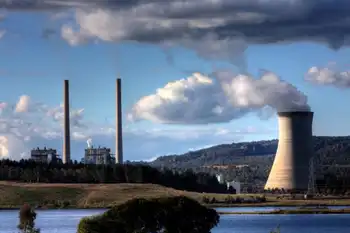
Imported coal volumes up 17% during Apr-Oct as domestic supplies shrink
WASHINGTON - The receipt of imported coal by thermal power plants has shot up by 17.6 per cent during April-October. The coal import volumes refer to the power plants monitored by the Central Electricity Authority (CEA), a power update report from CARE Ratings showed.
Imports escalated as domestic supplies by Coal India Ltd (CIL) and another state run producer- Singareni Collieries Company Ltd (SCCL) dipped in the period. Rate of supplies by the two coal companies to the CEA monitored power stations stood at 80.4 per cent, indicating a shortfall of 19.6 per cent against the allocated quantity.
According to the study…


